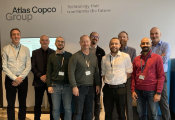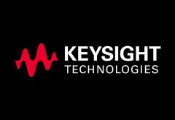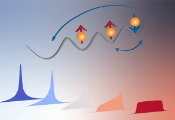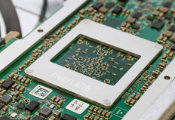Q.ANT Gives Cloud Access to its First Photonic Chip for AI Inference
Stuttgart, September 12, 2024 – Q.ANT, the leading German startup for light-based data processing, today announced the first-ever hands-on opportunity to explore photonic computing via the cloud with the company’s Native Processing Unit (NPU). By processing data with light instead of electrons, Q.ANT’s photonic native computing technology is projected to perform complex computational tasks more efficiently than today’s chip technologies. By granting cloud access to the company’s NPU, users can experience this innovative photonic chip technology through an exemplary showcase: the rationalization of handwriting. Q.ANT is inviting innovators and researchers to participate in a shift that could reshape the digital landscape. With this demonstration, Q.ANT offers a glimpse into Next-Generation Computing applications for High-Performance Computing (HPC), physics simulations, and artificial intelligence. Interested individuals can view the demo on Q.ANT’s website.
This showcase is a representative example of tasks found in every data center today. The fundamental difference is that Q.ANT’s NPUs process data via light, unlike standard CMOS processors. This paradigm shift allows Q.ANT to perform basic mathematical operations in a much more power efficient manner. For example: While a conventional CMOS processor requires 1,200 transistors to perform a simple 8-bit multiplication, Q.ANT’s NPUs achieve this with a single optical element. For this operation alone, the Q.ANT NPU is thirty times more power efficient than its conventional CMOS counterpart. “As the demand for AI continues to grow, so does the need for energy-efficient solutions. Q.ANT is leading the way with a functioning photonic processor—far beyond the research phase most others are still in,” said Dr. Michael Förtsch, CEO of Q.ANT. “This demonstration highlights a significant step in addressing AI’s energy demands and the broader carbon challenge. We invite researchers and developers to explore the real-world potential of photonic computing through our hands-on demonstration.”
A key element of this breakthrough is Q.ANT’s proprietary chip material platform, based on Thin-Film Lithium Niobate (TFLN). It is the backbone of all Q.ANT NPUs and ensures precise light control at the chip level. The startup has been developing this platform since its founding in 2018 and controls the entire value chain – from raw material to finished chip. Combined with a deep understanding of light, this allows Q.ANT to increase the mathematical and algorithmic density even beyond conventional CMOS processors. For example: While the basic mathematical function of a Fourier transformation requires thousands to tens of thousands of complex multiplications, the equivalent of millions of transistors, optics achieves this with a single element. “The key to harnessing the potential of light for computing is to control it end-to-end. Any compromise dramatically reduces the probability of success. This is why we at Q.ANT, unlike all our competitors, have chosen the deep-tech approach and developed a superior chip platform for light processing,” said Förtsch.
In the showcase system, users can select an image of a handwritten number from the MNIST (Modified National Institute of Standards and Technology) database. Using a trained neural network, the NPU predicts the number (0-9) and efficiently performs matrix-vector multiplication on the photonic chip. With a recognition accuracy of 95%, this demonstration proves that Q.ANT’s photonic processor – powered by light and based on TFLN technology – can perform complex AI tasks with reduced power consumption. This achievement marks the first time such a photonic processor has been successfully deployed in a practical application, underscoring its potential in AI operations.
The web demonstration of the photonic NPU provides valuable insights into how photonic computing can be practically applied to overcome current limitations in AI and machine learning, paving the way for future advancements in this transformative field. “We’re developing Native Processors that solve today’s logic problems natively, using light as the medium,” said Förtsch. “Imagine a future where high-performance computing operates with minimal energy and at least as powerful as our brain – this is the vision behind native computing.”




































